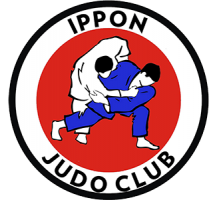
Dr Jigoro Kano = Founder of Judo
1882 = Year Judo founded
Jiujitsu = Martial Art Judo derived from.
Kodokan = School for study of system of Judo established in 1882 by Dr. Jigoro Kano, located in Tokyo, Japan.
Dojo = Judo practice/exercise hall
Sensei = Teacher or instructor
Joshu = Assistant instructor
Dan = Judo rank, Black Belt
Yudansha = Black Belt Holder
Kyu = Judo rank, before Black Belt
Mudansha = Holder of rank before Black Belt
Judoka = Judo student
Judogi, Gi = Judo uniform
Obi = Judo belt
Kiotsuke = Attention
Rei = Bow, salutation
Ritsurei = Standing bow
Zarei = Kneeling bow
Seiza = Formal sitting posture
Anza = Informal sitting posture
Kiai = Shout or a cry with practical and psychological values.
Shisie = Posture
Shizentai = Natural standing posture
Shizen Hontai = Basic natural standing posture
Migi Shizentai = Right natural standing posture
Hidari Shizentai = Left natural standing posture
Jigotai = Defensive standing posture
Jigo Hontai = Basic defensive posture
Migi Jigotai = Right defensive Posture
Hidari Jigotai = Left defensive posture
Three parts to throwing:
Kusushi = To break the posture of the opponent; make off balance
Tsukuri = Positioning yourself in relation to your opponent
Kake = Initiation of the throw
Suriashi = Sliding movement of the feet
Tori = Offence
Uke = Defence
Mokuso = Meditation
Uchikomi = To practice the standing techniques without throwing – repetitions
Nagekomi = To practice the standing techniques without resistance. – moving, trading throw with partner
Tachi-waza = Standing techniques of throwing
Katame-waza = The techniques of grappling (mat work)
Tai-sabaki = Body control; controlled turning action; primarily fluid and fast turning movements.
Ayumi ashi – natural walking style; sliding feet across mat with majority of weight over leading foot.
Tsugi ashi = When moving any directions, one foot always lead and the other follow; after each step one assumes one of the basic postures.
Ukemi = Breakfall techniques; meaning “Falling way”
Koho Ukemi = Backward breakfall
Sokuho Ukemi = Slide fall
Zempo Ukemi = Front fall
Zempo Kaiten Ukemi = Forward rolling ukemi
Te = Hand
Koshi = Hip
Ashi = Foot
Mae – In front
Yoko = Side
Ushiro = Back
Sumi = Corner
Kumikata = Forms of Grasping the Opponent
Happo No Kusushi = 8 directions of Kusushi and various grips (right or left)
- Ma Mae = front/forward
- Hidari Mae Sumi = Uke’s left front corner
- Hidari Yoko = Uk’s left side
- Hidari Ushiro Sumi = Uke’s left rear corner
- Ma Ushiro = directly backward
- Migi Ushiro Sumi = Uke’s right rear corner
- Migi Yoko = Uke’s right side
- Migi Mae Sumi = Uke’s right front corner
Kata = formalized demonstration
Randori = free practice
Shiai = Contest, match or tournament
Hajime = Command to begin, go
Matte = stop; wait
Sonomama = Freeze (the position)
Yoshi = Restart (after sonomama)
Soremade = Time’s up; match over
Toketa = Stop timing hold-down; hold-down broken
Jyogai = Out of bounds, action doesn’t count
Ippon = Full point
Waza-ari = half point
Waza-ari Awasete Ippon = Two half point added – equal full point
Shido = Penalty
Hansuko-make = Penalty equal to Ippon
Jikan = Time (used by referee)
Shinban = Referee /judge
Osaekomi = pin technique started/initiated
Osaekomi toketa = (toketa) the action is terminated prior to completion (hold down broken)
Kachi = winner
Hantei = referee’s call for decision
Hiki-wake = draw, no winner
Gachi = winner
